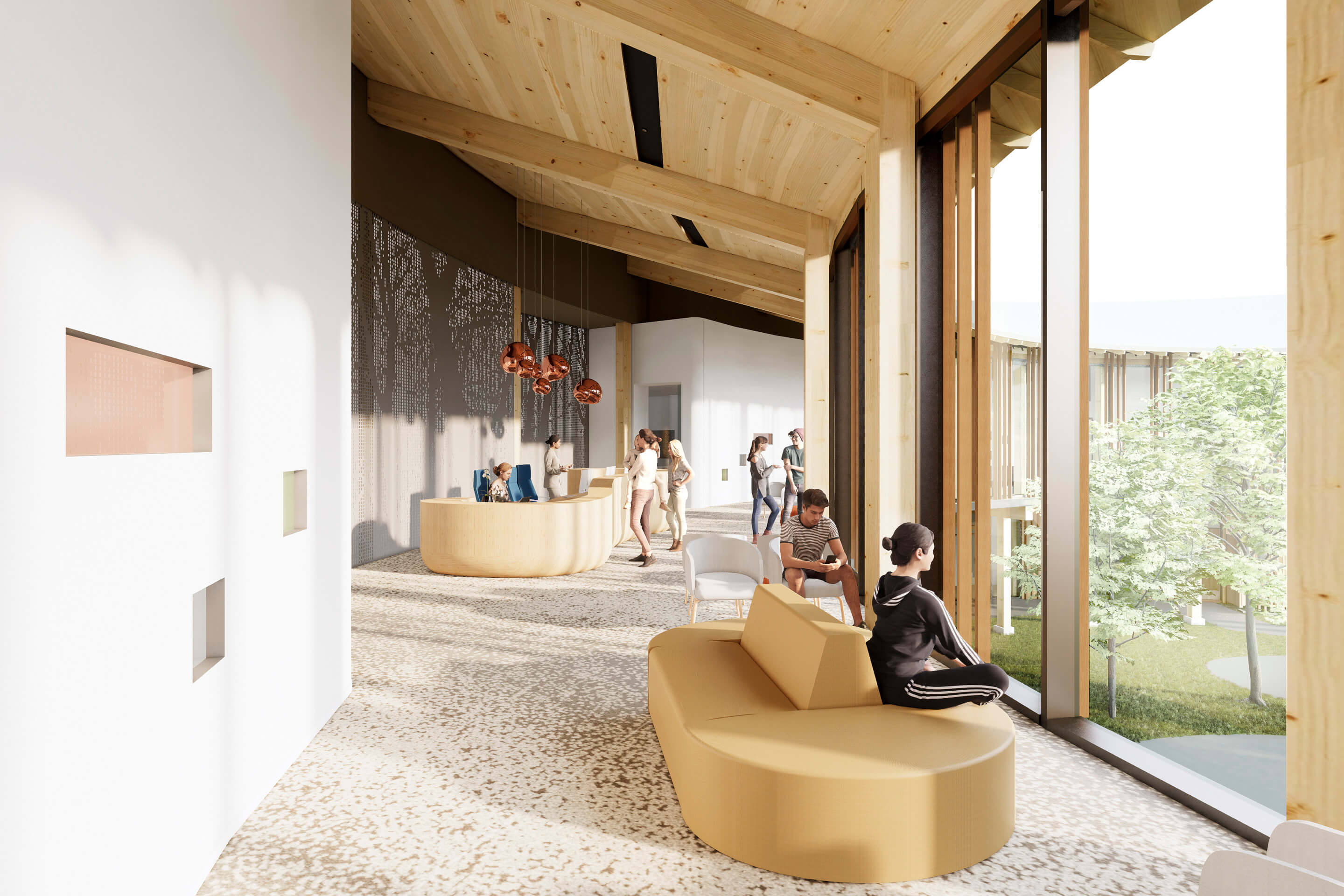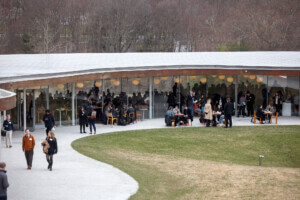The growing consumer demand for transparency—especially around sustainability and environmental practices—has implications for industries from apparel to healthcare products. Mars Inc. recently released a cocoa sourcing map to tackle deforestation and increase accountability, and the Fashion Transparency Index pushes apparel companies to be more forthcoming about their social and environmental efforts.
Now it’s time for the building industry, characterized by a lack of information around the materials and practices used in construction and throughout a building’s lifecycle, to catch up. The cost of inaction is too high to ignore. That’s because buildings account for 39 percent of total global carbon emissions. Traditionally, most carbon reduction efforts in the building sector focus on operational carbon—a building’s everyday energy use, which accounts for roughly 28 percent of emissions. The remaining 11 percent comes from what is often ignored: embodied carbon.
Embodied carbon consists of all the emissions associated with building construction, including extraction, transportation, manufacturing and installation of building materials on-site, as well as the operational and end-of-life emissions of those materials. It is also largely “upfront” carbon—the greenhouse gas emissions that are released in the early phases of a life cycle—which means that its negative impact now cannot be reversed later. Most importantly, the magnitude of embodied carbon emissions between now and 2030 dwarfs the incremental impact of operational carbon, therefore, the immediate focus for embodied carbon reductions must be on the next decade. this post, we explore strategies to reduce it in the built environment.
Strategies to Reduce Embodied Carbon Across Typologies
To reduce embodied carbon in the built environment, the following strategies should be applied across building typologies and sectors.
- Select Low Carbon Materials
According to Architecture 2030, concrete, steel, and aluminum are responsible for 23 percent of total global emissions. There is great opportunity for embodied carbon reduction in these high-impact materials through policy, design, material selection and specification. A McKinsey report on embodied carbon in buildings explains, “Two materials may look identical, cost the same amount, perform to the same standard—but have totally different embodied carbon characteristics. For example, a 100 percent recycled-steel beam produced using renewable energy may appear identical to a virgin-steel beam produced using a coal-fired furnace—but have significantly different levels of embodied carbon. Where each steel beam came from and how far it was transported add further complexity.”
Using fewer materials without compromising quality and selecting the right building materials with recyclable content is important to achieving embodied carbon savings. For example, use of recycled aggregates, greener concrete options, reclaimed structural steel, FSC certified timber, or other innovative carbon-negative materials such as plant-based insulation help to sequester carbon and reduce the measured materials’ embodied carbon content. Certified sustainable materials should also be sourced from supply chains that have committed to transparent environmental product declarations and operate a net-zero carbon business.

While it can be difficult to discern the embodied carbon in a specific material, certain materials have inherently lower embodied carbon, such as mass or cross-laminated timber (CLT). The use of CLT in healthcare buildings is especially advantageous, as demonstrated in the new Ohana Center for Behavioral Health in California. While hospitals are typically some of the most energy-intensive buildings on the planet due to the use of specialty equipment and the need to operate 24/7, they can benefit from CLT’s low carbon impact and its anxiety-reducing biophilic properties. CLT also lends itself particularly well to modular construction and offsite assembly, which is often faster, more cost-effective, and more sustainable than traditional methods of building.
- Perform a Whole Building Life Cycle Analysis
Life cycle analysis refers to the quantification of an entire building’s potential environmental impact. Conducting a whole building life cycle analysis after material selection allows design teams to spotlight potential environmental issues and identify more sustainable alternatives. Life cycle analyses involve compiling an inventory of relevant material inputs and the associated environmental outputs (for example, climate change) associated with a building, evaluating the potential impacts of these inputs and outputs, and interpreting the results to make environmentally responsible decisions.
As the importance of addressing embodied carbon gains momentum, methodologies and protocols on how to measure embodied carbon in a standardized way continue to emerge. For example, publications that give guidance on and suggest benchmarks and targets for assessing the embodied carbon of buildings and construction materials, or digital tools like Tally, OneClick LCA, EC3, or Athena that can help to accurately calculate embodied carbon. To bring better carbon education and awareness during the earliest phases of our projects, our firm designed Zero Guide, an internal tool that estimates the carbon equivalent of emissions associated with all aspects of a project, providing educated recommendations for how to lower its carbon footprint.
- Implement Low Carbon Procurement Policies
For some major materials—for example, concrete—designers can request the embodied carbon footprint information of the mix designs, of which there are many that can meet the design intent if specified by performance requirements. Then, the compliant bid can be selected based on carbon footprint as well as cost, resulting in significant savings. The Embodied Carbon in Construction Calculator (EC3)—a free database of construction environmental product declarations (EPDs) and matching building impact calculator for use in design and material procurement—is intended for this purpose. For example, Microsoft’s commitment to becoming carbon negative by 2030 means a reduction in emissions across operations, from buildings to datacenters. The new headquarters in Redmond, Washington, employs innovative energy-saving techniques such as geothermal wells and serves as a pilot program for EC3.
- Invest in Carbon Offsets
In addition to offsetting the ongoing emissions of building operation, the embodied carbon from construction of new buildings or renovations can be offset through a one-time purchase to zero out the construction emissions. Transparency, however, is a critical prerequisite to selecting, analyzing, purchasing, and offsetting embodied carbon.
To effectively reverse climate change and create a healthier planet, carbon-based decision-making is critical. By addressing operational carbon and then embodied carbon in the built environment through low carbon materials, building lifecycle analysis, low carbon procurement policies, and investing in carbon offsets, we can minimize the built environment’s carbon footprint and spark meaningful change.
Peter Alspach is Principal/Director of Design Performance at NBBJ. Margaret Montgomery is Principal/Sustainable Design Leader at NBBJ.











